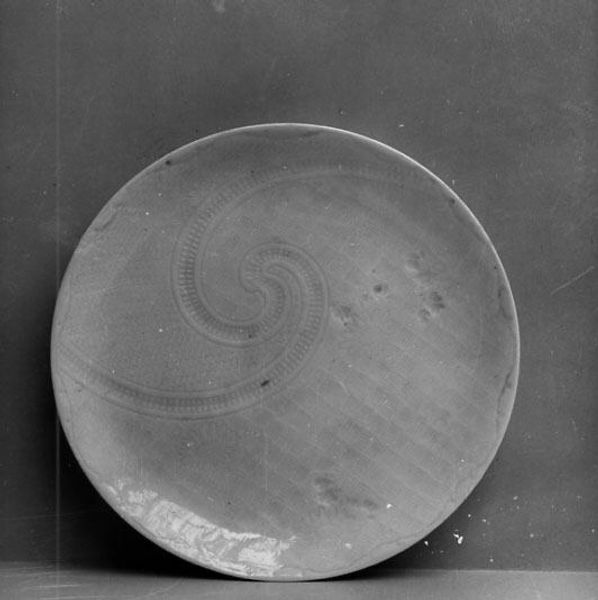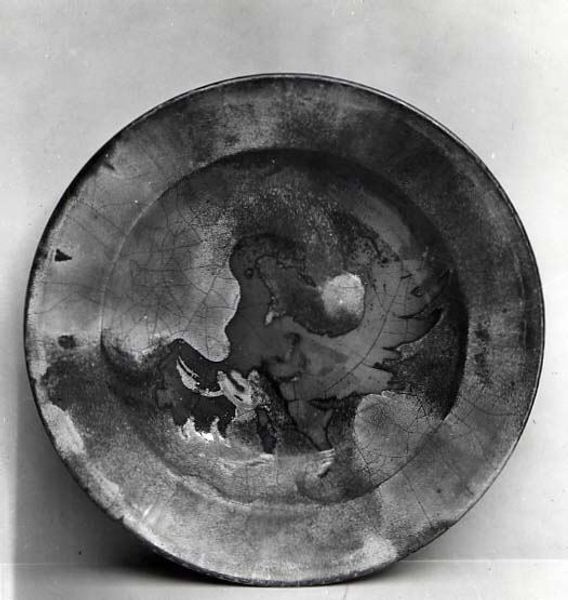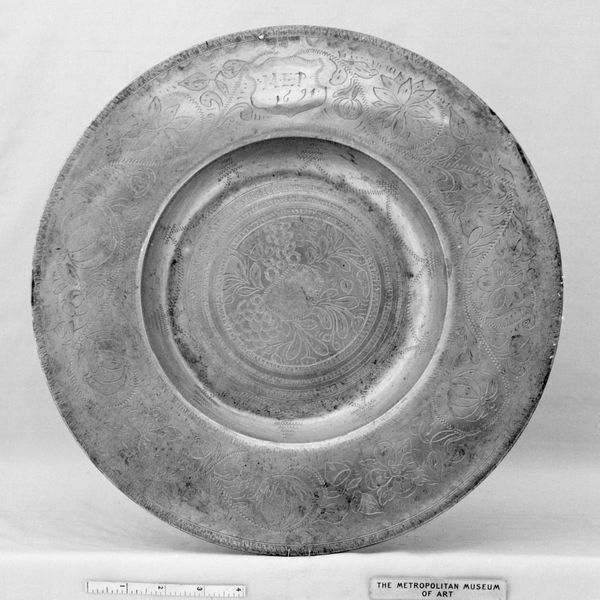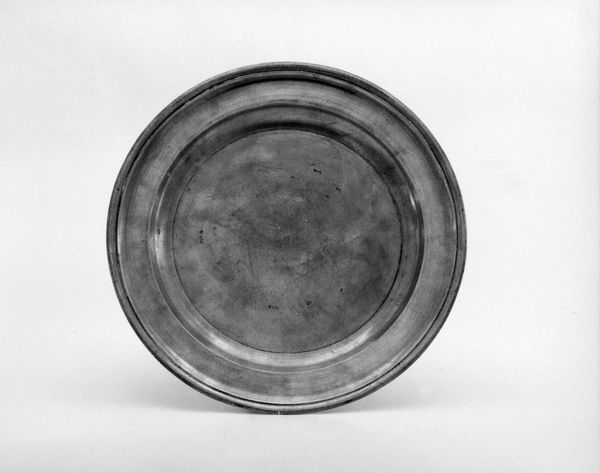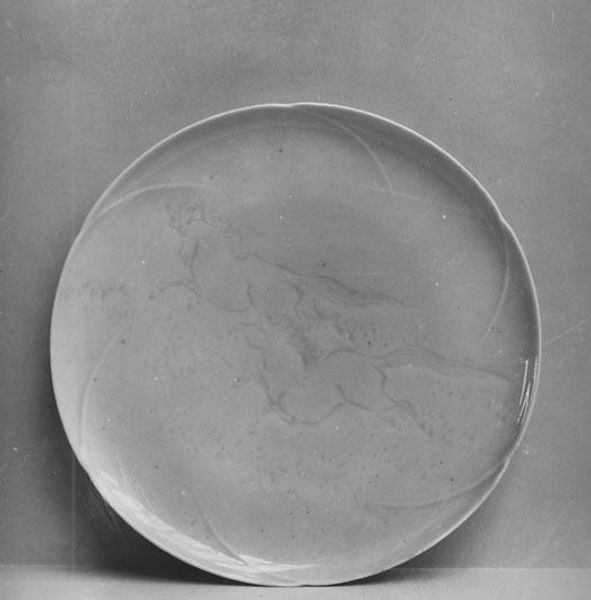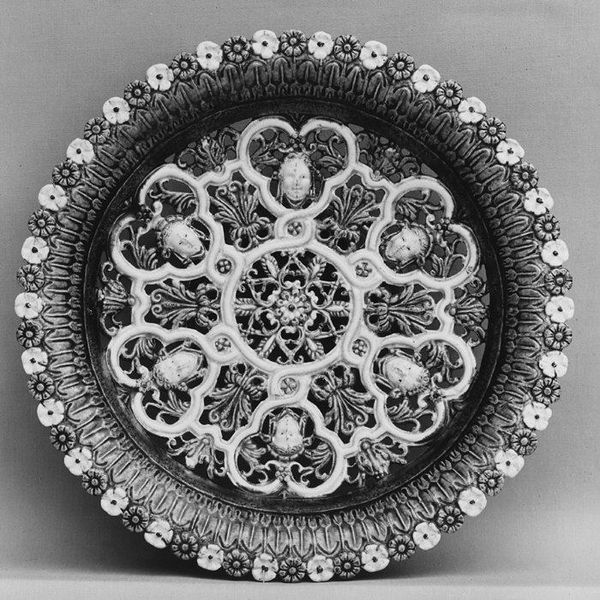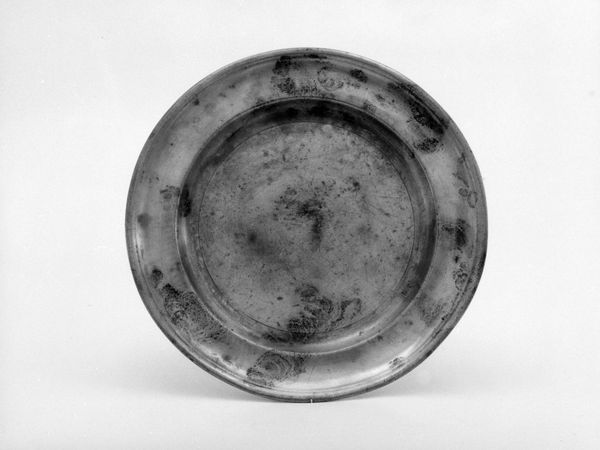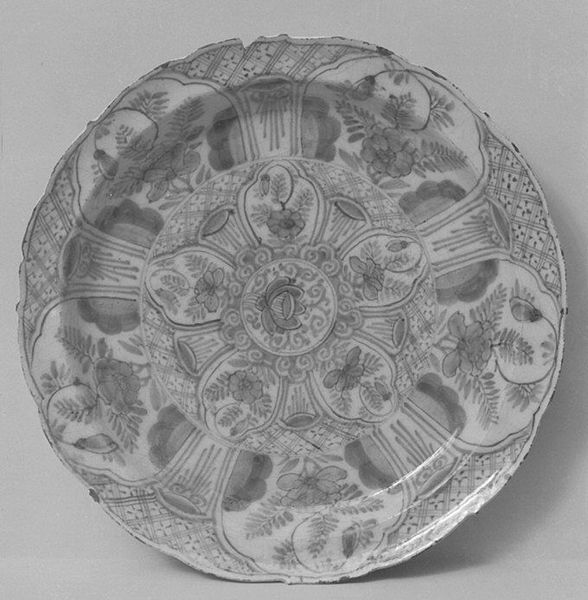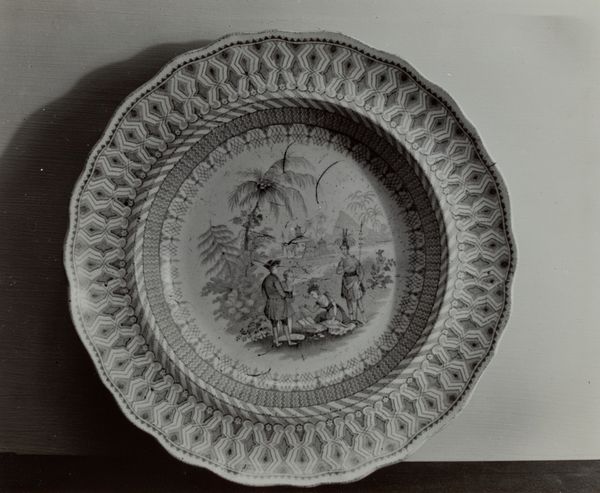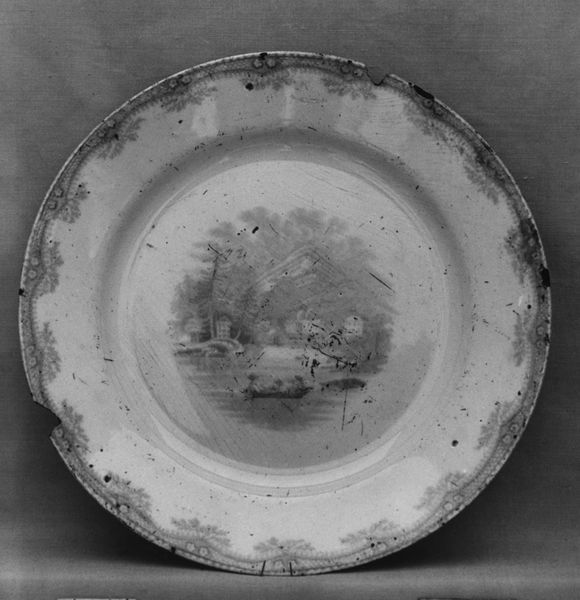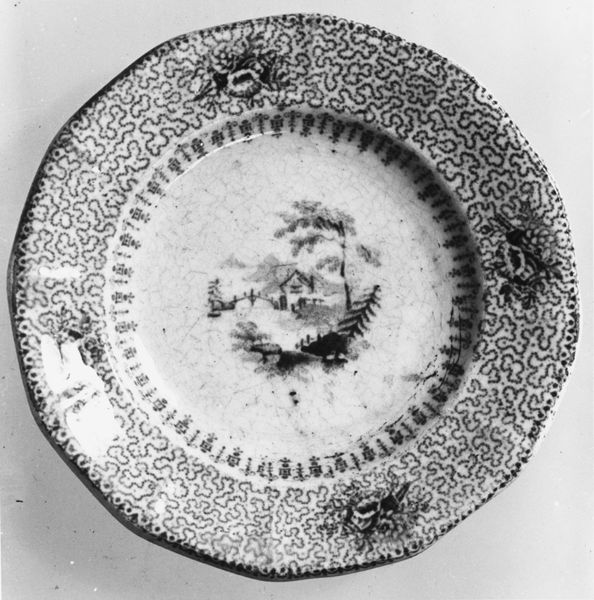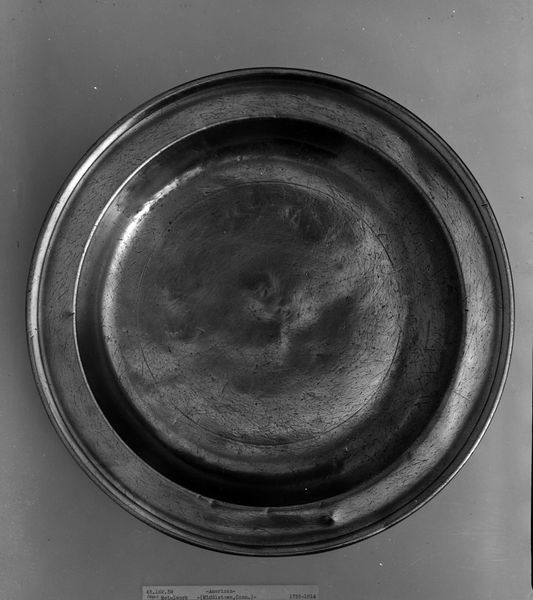
glass, sculpture
#
art-nouveau
#
sculpture
#
glass
#
geometric
#
sculpture
#
abstraction
#
decorative-art
Dimensions: Diam. 13 5/8 in. (34.6 cm)
Copyright: Public Domain
Curator: This is Louis Comfort Tiffany’s “Plaque” from 1893, currently held at the Metropolitan Museum of Art. It's crafted from glass and offers a glimpse into Art Nouveau sensibilities. Editor: It’s a deceptively simple object. From a distance, the plaque seems almost like a cosmic landscape. The radiating patterns in the center contrast sharply with the textured rim. How do we even begin to unpack a piece like this? Curator: Let's begin with the materiality. Tiffany’s innovative use of glass challenged the conventional hierarchies between art and craft. He elevated a "low" material to the realm of fine art, pushing against established artistic boundaries. How might the social context of the Gilded Age influenced Tiffany's artistic choices, given that glass was becoming increasingly accessible through industrial production? Editor: So, the act of creating this plaque wasn’t just about aesthetics, but also a statement about value and labor. It suggests that everyday materials, when handled with skill and vision, can transcend their perceived limitations. Curator: Exactly! Consider also the chemical processes Tiffany experimented with to achieve such iridescent and unusual surfaces. These weren’t just happy accidents, but deliberate manipulations pushing the boundaries of what glass could be. Were these readily available technologies at the time? Or the result of a private laboratory? What impact do these conditions have on the artwork’s perceived value? Editor: Right, thinking about the means of production also impacts its meaning. If it were mass-produced using advanced techniques, its interpretation could shift towards being a comment on consumption and industrialization rather than a celebration of individual artistry. It is starting to come to life! Curator: Indeed. And perhaps also Tiffany's relationship with his team of artisans and laborers in executing these intricate works should be examined. How do the different ways people are engaging with, producing, and distributing artwork alter or impact the artistic meaning and its function? Editor: This definitely makes me look at the plaque with new eyes. The beauty is more than surface-level; it reflects complex socio-economic forces at play during its creation. Thank you! Curator: The pleasure is mine. It is through considering materials, processes and context that this seemingly decorative art reveals more.
Comments
No comments
Be the first to comment and join the conversation on the ultimate creative platform.
